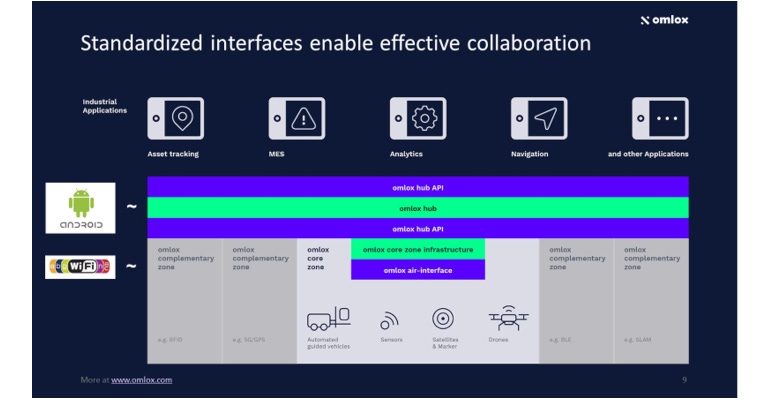Healthcare Digitalization Needs Standards to Get Low Total Cost of Ownership
Omlox global locating standard takes off.

In the past, lifetime costs for locating healthcare equipment, beds, or patients were unpredictable given the risk of vendor lock-in. There are probably more than 1000 existing proprietary solutions for indoor tracking available. Some might be affordable in the first step, but then the solution depends long term on this single vendor, which leads to low flexibility and unpredictable costs for any adaptation needed later on. Now a new day is dawning with the omlox open locating standard. It can be used for an unlimited amount of different applications from different vendors.
If you compare the consumer sector to healthcare with regard to locating technology, what stands out in particular is the speed. The consumer industry is driving all participants ahead at high speed. This is surely because of the fact that this industry consists of just a few global players. However, there is another crucial difference: In the consumer sector, people don’t actually know precisely who has access to the data. The situation is completely different in healthcare. There, people are more vigilant, and data sovereignty is very important.
However, this is just one of the reasons why real-time locating systems have not yet made a breakthrough in healthcare, while it is already a matter of course in the private sector. There is not yet any uniform standard in this industry. The current solutions are vendor specific, and any transfer to other applications needs the support of this proprietary vendor. Location tags from different vendors are not exchangeable, and the installed solutions depend upon the flexibility and support of this specific vendor. This is still the case despite the power of wifi’s interoperability on a daily basis.
Speaking of wifi, we are used to buying the access points from different vendors and using the wifi signal in many different devices from different vendors. This scenario would also be possible with the new locating standard omlox. It could change the cost of ownership and the usability, just like wifi did in past decades.
Locating Indoors Has a lot of Potential
In recent years, there has been a lot of excitement about digitalization. But many such ideas can only be realized if there are affordable solutions. Beds, wheel-chairs, ICU-equipment, mobile monitoring-tools, etc. need to be managed, and together they add up. Besides asset-management, indoor locating can also track critical patients or monitor drug distribution or guide autonomous vehicles for transport.
The new open mobile omlox locating standard aims to support all these applications and many more, like safety applications, access control, and process optimization through analytics.
omlox is just an open standard: The final application can be sourced from different vendors and devices or software-apps can be added at any point from any supplier, just like we experience every day with Android for apps or with wifi for devices. By using omlox, any vendor lock-in will be prevented and your locating system will stay flexible.
omlox is Managed by a Global Non-Profit-Organization
Originally designed for the manufacturing industry, omlox is hosted by the Profibus International organization, with more than 1500 members globally. To learn more about omlox just visit www.omlox.com or www.omlox-live.com or get in direct contact with [email protected].
About the Author(s)
You May Also Like



.png?width=300&auto=webp&quality=80&disable=upscale)
